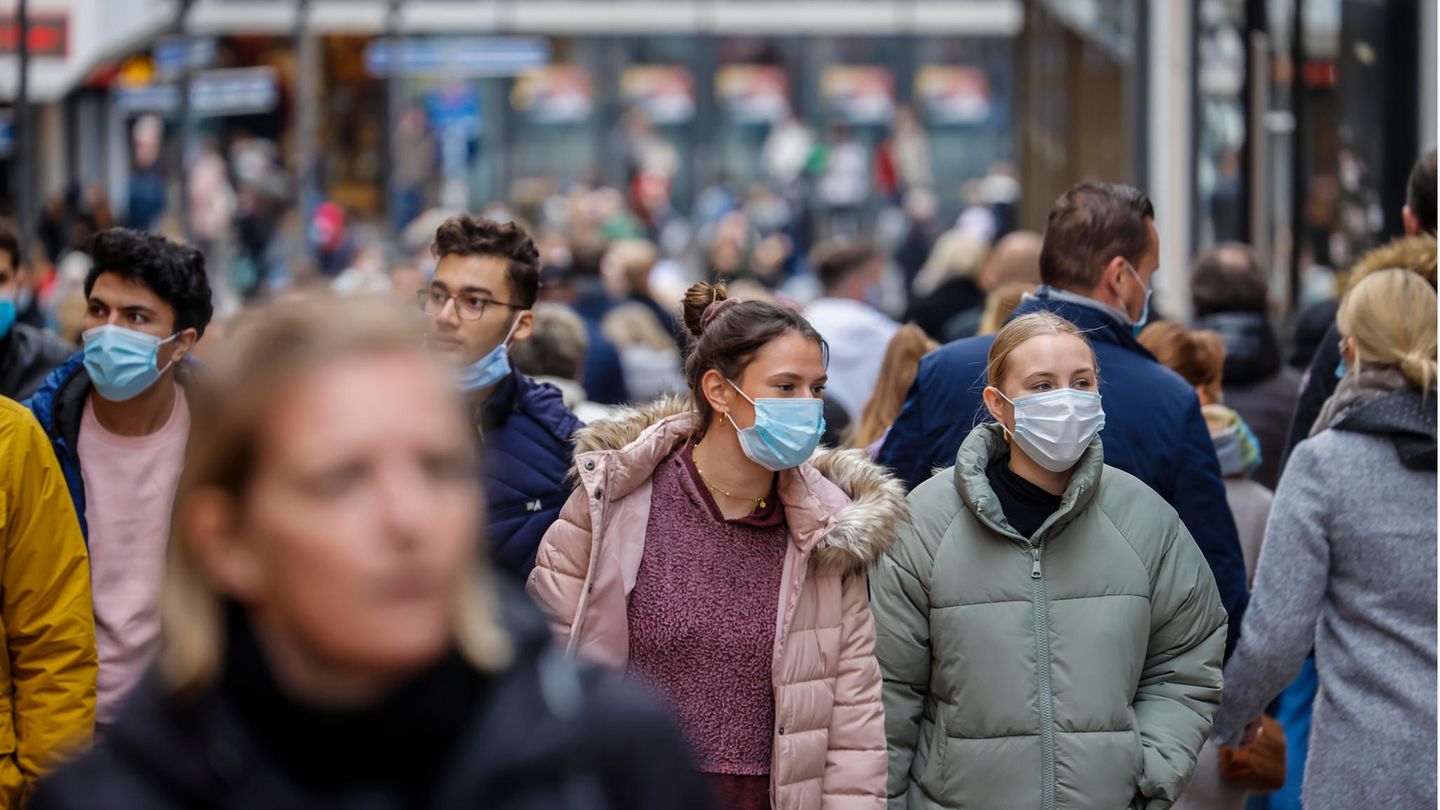
Long-term consequences of Corona: Expect an increase in the number of cases among teenagers
Experts warned
“Common and long-term problems”: Increased long-term consequences of aura in adolescents

Young men wearing masks outside in downtown Essen (Archives)
© Rupert Oberhäuser / Picture Alliance
It will take some time for a Corona vaccine to be available for children and adolescents. Even if the infection is very mild or asymptomatic: Experts expect an increase in long-term effects.
With the increase in corona infections in children and adolescents, according to the pediatrician at Infection, more long-term consequences are expected in these groups. “Due to the easing of measures, we expect more people who often have common and long-term health problems,” Markus Hofnagel of the Center for Pediatrics and Adolescents at the University Hospital Freiburg told Deutsche Presse-Agentur. “Compared to the state of care in adults after surviving the infection, pediatrics is not yet prepared for this.”
Acute infections are often asymptomatic in children, and severe courses of the disease are still rare in adolescents. However, long-term effects are also reported in minors: These are sometimes identified only months after infection or worsening coronavirus infection, Hoffnagel says. In such cases, for example, doctors have to rule out the presence of another infection with tests. In order to be able to provide outpatient offerings to those affected, there are considerations for establishing special outpatient clinics for children and adolescents.
“The clinical picture is very variable.”
In technical parlance, the phenomenon of Long Covid (Long Covid-19) or Post Covid (after Covid-19) is mentioned. Since the Covid 19 vaccines have not yet been approved for children and teenagers, they are among the groups that will be susceptible to contracting the virus for a few more months. As coronavirus measures relax with the opening of schools and daycare, the focus is on the potential late effects of the infection in these groups. According to data from the Robert Koch Institute (RKI), confirmed cases of coronavirus in children and adolescents have been increasing for weeks.
Hoffnagel explains that “the clinical picture is very variable” and lists the possible consequences that can occur together: They include chronic fatigue, decreased general functioning, and joint and muscle pain. But the skin also changes, similar to finger swelling on the toes. On the other hand, the constant loss of smell and taste plays a secondary role in children and adolescents compared to adults. “In general, the symptoms are not specific to Sars-CoV-2. This means that we are also aware of the ongoing health restrictions from other viral infections such as glandular Pfeiffer fever,” Hoffnagel emphasized.
Post-COVID cases in adolescence: No data from Germany
The problem should not be underestimated: the greater the total number of cases, the greater the number of those who suffered Lange. “The problem is now getting worse and not smaller,” Hoffnagel said. “We are already seeing a lot more post-Covid cases.” “These are most likely adolescents; cases in the first 10 years of life are significantly less common.” As a general rule, parents may suspect a link with Corona infection, and in some cases there is already evidence of antibodies.

So far, there is no data from Germany on this topic, Hofnagel said, who, together with colleagues from the University of Dresden Children’s Clinic, has created a disease progression record for all inpatients and adolescents with SARS-CoV-2 infection from the German Society for Infectious Diseases of Children. A study in which families with corona cases were followed over a longer period of time showed that five percent of children and adolescents under the age of 14 still had at least one symptom three months after infection. In adults, Hoffnagel said, it affects up to one in three.
Lock as the main pressure factor
Estimates by British statisticians from the Office for National Statistics (ONS) also show that the burden appears significantly more pronounced in adults after injury. While the proportion of those still experiencing at least one symptom such as coughing, fever, or fatigue five weeks after infection is about 13 percent in children between the ages of 2 and 11 years, it is 14.5 percent in the age group. 12 to 16 years old.
However, according to Hufnagel, the generally stressful and tiring state of the pandemic does not only play a role when the long-term effects occur, not just the virus. “The lockdown is a major stress factor. If the epidemiological situation improves, at least some of those affected should also see better signs of exhaustion.”

“Organizer. Social media geek. General communicator. Bacon scholar. Proud pop culture trailblazer.”

